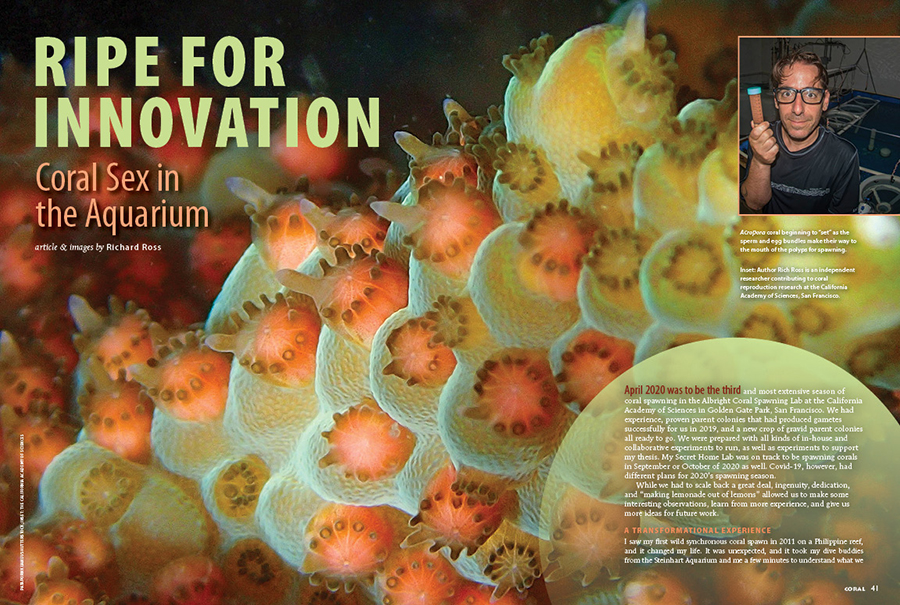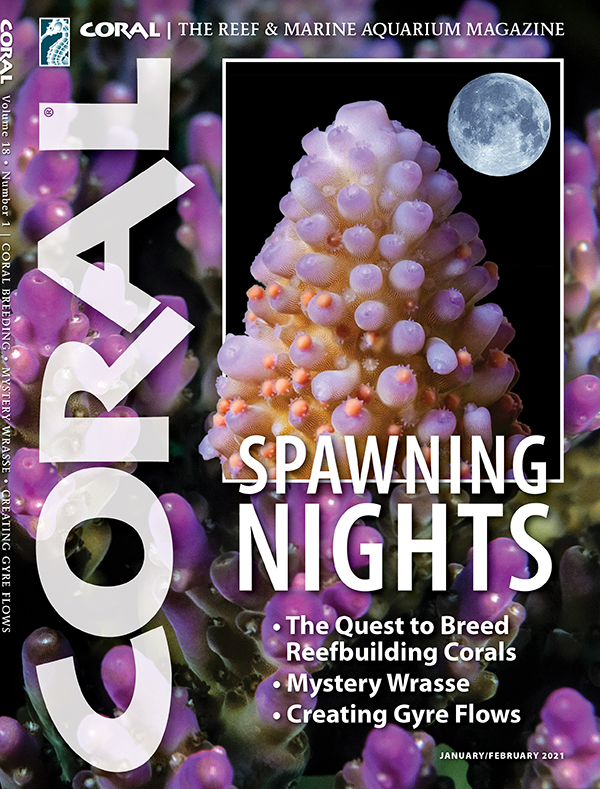
an partial excerpt from Ripe for Innovation, by Richard Ross, from the January/February 2021 issue of CORAL Magazine
COVID SPAWN, 2020
I returned from Palau on March 1st with the parental colonies, and over the next few weeks, Covid-19 screamed for attention. On March 6th, 2020, California declared a state of emergency, and we started to think about social distancing. My daughter had her first public art show on March 14th, and the gallery was sanitizing everyone’s hands and only allowing 10 people in the gallery at a time. The show was lightly attended. On March
16th, the San Francisco Bay area issued shelter-in-place orders to prevent the spread of the virus.
The Academy [California Academy of Sciences] went on lockdown, and rightfully took that mandate very seriously, which meant that getting into the building to monitor for spawning action during the 15-day window in April was problematic. We were not considered essential workers. Instead of risking the health of the truly essential workers at the Academy who were caring for the 30,000 animals in the living collection, and risking our health by going into the Academy, we worked with one of the tech gurus on staff, Toshiro Chang, to install a camera in the spawning lab that would allow us to remotely monitor for spawning action. When we saw spawning occur, Dr. Albright was granted permission to go in to collect the spawn, fertilize it, prepare some samples for some of the less complicated studies
we had planned, and then bring some of the fertilized larvae outside of the building, where I would pick up the embryos and seasoned substrates and take them home to develop and settle.
The video monitoring worked well. It was something we had talked about since the beginning of the project but never had the need to try. Monitoring for a spawn is an interesting challenge because the tanks are in the
dark at the time of the spawn. Thanks, Covid.
Watch Acropora hyacinthus spawn at the Albright Coral Spawning Lab, remotely monitored and recorded due to the Covid-19 Pandemic





